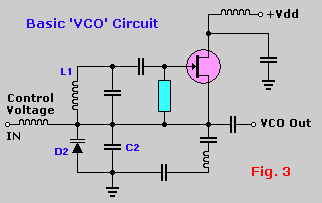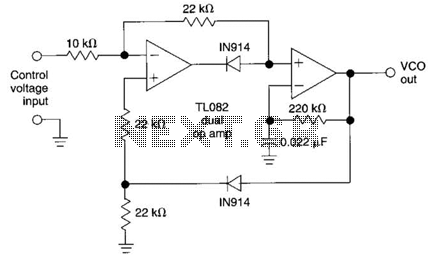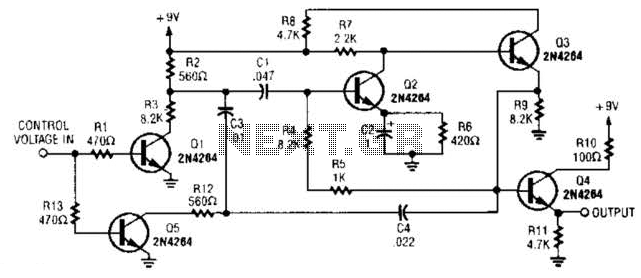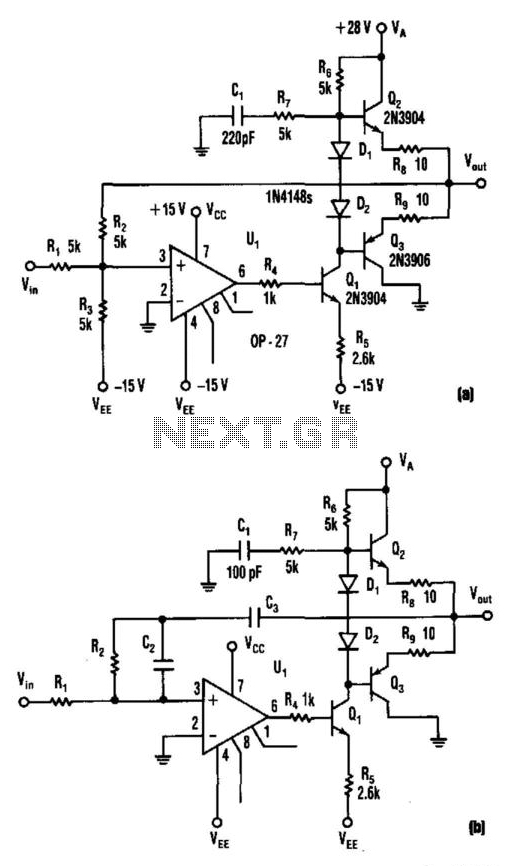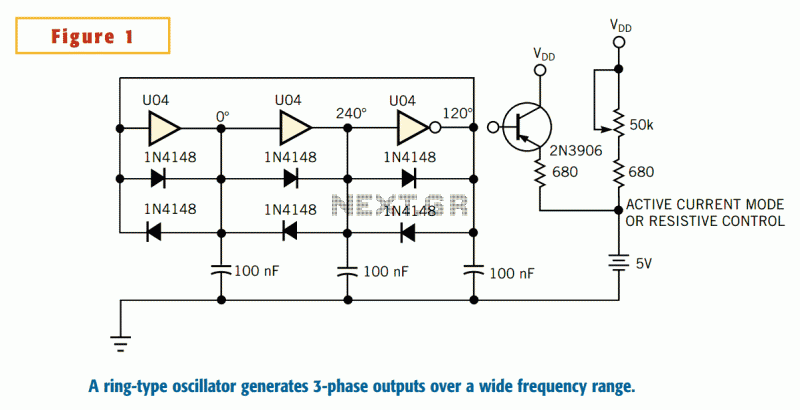
Trimless IF VCO

This paper is a tutorial discussion of intermediate frequency voltage-controlled oscillator (IF VCO) design considerations. A Colpitts topology is analyzed and used to explore performance impacts.
The discussion on IF VCO design considerations focuses on the critical aspects of voltage-controlled oscillators operating at intermediate frequencies. The Colpitts oscillator topology is particularly highlighted due to its favorable characteristics, including stability and tunability, which are essential for effective frequency modulation.
In a Colpitts VCO, the oscillation frequency is primarily determined by the capacitive and inductive components in the circuit. The configuration typically consists of a transistor, which serves as the active device, and a feedback network composed of two capacitors and an inductor. This arrangement allows for the generation of oscillations by creating positive feedback, which is crucial for sustaining the oscillatory behavior.
The performance of the Colpitts VCO is influenced by several factors such as component values, temperature stability, and power supply variations. The choice of transistors, whether bipolar junction transistors (BJTs) or field-effect transistors (FETs), can also significantly impact the oscillator's frequency stability and phase noise characteristics.
Additionally, the design must consider the tuning range, which is the range of frequencies over which the VCO can operate. This is typically achieved through varactor diodes, which allow for voltage-controlled capacitance, thereby enabling frequency modulation in response to input voltage changes. The design of the feedback network is critical to achieving the desired tuning characteristics while minimizing unwanted harmonics and ensuring linearity in the frequency response.
Overall, the analysis of the Colpitts topology in IF VCO design emphasizes the importance of careful component selection and circuit configuration to optimize performance for various applications in communication systems and signal processing.This paper is a tutorial discussion of IF VCO design considerations. A Colpitts topology is analyzed and used to explore performance impacts.. 🔗 External reference
The discussion on IF VCO design considerations focuses on the critical aspects of voltage-controlled oscillators operating at intermediate frequencies. The Colpitts oscillator topology is particularly highlighted due to its favorable characteristics, including stability and tunability, which are essential for effective frequency modulation.
In a Colpitts VCO, the oscillation frequency is primarily determined by the capacitive and inductive components in the circuit. The configuration typically consists of a transistor, which serves as the active device, and a feedback network composed of two capacitors and an inductor. This arrangement allows for the generation of oscillations by creating positive feedback, which is crucial for sustaining the oscillatory behavior.
The performance of the Colpitts VCO is influenced by several factors such as component values, temperature stability, and power supply variations. The choice of transistors, whether bipolar junction transistors (BJTs) or field-effect transistors (FETs), can also significantly impact the oscillator's frequency stability and phase noise characteristics.
Additionally, the design must consider the tuning range, which is the range of frequencies over which the VCO can operate. This is typically achieved through varactor diodes, which allow for voltage-controlled capacitance, thereby enabling frequency modulation in response to input voltage changes. The design of the feedback network is critical to achieving the desired tuning characteristics while minimizing unwanted harmonics and ensuring linearity in the frequency response.
Overall, the analysis of the Colpitts topology in IF VCO design emphasizes the importance of careful component selection and circuit configuration to optimize performance for various applications in communication systems and signal processing.This paper is a tutorial discussion of IF VCO design considerations. A Colpitts topology is analyzed and used to explore performance impacts.. 🔗 External reference

